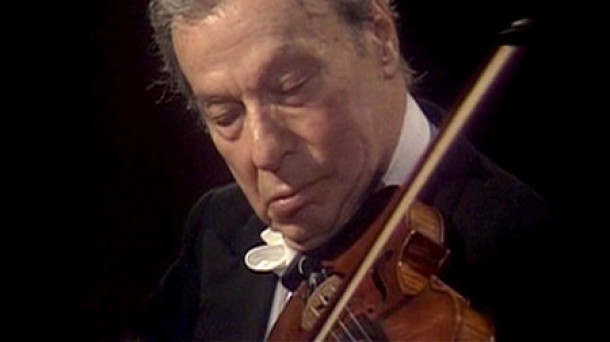 The victorious First Crusade established the capacity for believers to pilgrimage to the holiest sites in Christendom to walk in the footsteps of Jesus and identify with His life on earth. Biblical references were brought to stunning reality for the pilgrim in Jerusalem. The immense injection of vitality that this would provide to the church was obvious to Pope Innocent II, but the world of the twelfth century was a very dangerous place for a believer on pilgrimage. The road to Jerusalem was treacherous, filled with bandits, murderers, and many countries with little incentive to protect the pilgrim on his travels. A special group of evangelists were created out of the First Crusade whose calling was to be as defenders of the faith and those that sought the pilgrimage. Housed in the Temple of the Mount in Jerusalem, the monastic group of knights known as the Knights Templar proved to be Innocent’s vehicle for defense of the rights of pilgrims. He made sure they received unique abilities to transcend national borders and take a leading militaristic role in defending the base elements of the faith and the faithful.
The victorious First Crusade established the capacity for believers to pilgrimage to the holiest sites in Christendom to walk in the footsteps of Jesus and identify with His life on earth. Biblical references were brought to stunning reality for the pilgrim in Jerusalem. The immense injection of vitality that this would provide to the church was obvious to Pope Innocent II, but the world of the twelfth century was a very dangerous place for a believer on pilgrimage. The road to Jerusalem was treacherous, filled with bandits, murderers, and many countries with little incentive to protect the pilgrim on his travels. A special group of evangelists were created out of the First Crusade whose calling was to be as defenders of the faith and those that sought the pilgrimage. Housed in the Temple of the Mount in Jerusalem, the monastic group of knights known as the Knights Templar proved to be Innocent’s vehicle for defense of the rights of pilgrims. He made sure they received unique abilities to transcend national borders and take a leading militaristic role in defending the base elements of the faith and the faithful.
At the turn of the twentieth century, classical music was in need of just such a knights templar to defend itself against the inroads of radical transitions and intellectual demolishing of the elements of technique and romantic passion that had been responsible in achievement of its height as a primary cultural force. The group of passionate technicians that would save the concept of classic in classical music – the knights templar of musical performance that saved the human element of classical music – turned out to be a group of Russian Jews. Linked to the unique struggle for basic human rights in a Russia first under attack by authoritarian anti-Semitic czars, and later by atheistic Communist totalitarians, a stunning group of Jewish musical knights sprung forth from the vast Russian countryside from the years surrounding the birth of the 20th century. They managed through their brilliance to secure classicism in music and grudging respect for their people under enormous pressure for the destruction of each by forces that saw both classicism and Judaism as characteristics of a failed cultural model. The names Heifetz, Horowitz, and Rubinstein ring through the ages, but an equally talented and perhaps more monastically pure performer, Nathan Milstein, was as vital to the defense of classicism as any of his more famous fellow knights. Unlike the the aforementioned trio, however, Milstein was not a self promoter, and tended to let his music performance speak for itself.
And how it spoke. Milstein was a performer who saw the music as the spoken verse of the poet. The clarity of the language was critical to him. He devoted his performing to find ways to articulate the most difficult of passages with the precision he saw demanded by the composer. His technique was not the bounding passionate noise of explosive pyrotechnics of Horowitz. He wished to strive instead for the perfection of celestial music with superhuman clarity. Like the great Russian performers of the century’s turn, Milstein was identified by his prodigy status and brought to the great teacher of the Russian Conservatory, Leopold Auer. Milstein was not a revolutionary; he was truly a defender of the catechism, and took to Auer’s severely demanding style of instruction requiring surgical precision and humanistic passion in performance as indelibly intertwined forces, not conflicting truths. Milstein learned from Auer that difficult passages required not only physical gifts, but mathematical and geometric ones, and Milstein would ceaselessly work and re-work fingering techniques and strategies until he had achieved the most logical and efficient means of articulating the passage with precision. It was a philosophy that made Milstein a master of the classicists such as Beethoven and Bach, while bringing a humanity to the carnival aspects of Paganini. He proved you could marry both with clarity, and made it possible for Milstein to present reproducible interpretations that didn’t depend on his mood that day, or the romantic idealism so true of his good friend and fellow “child of the revolution”, Horowitz.
Nathan Milstein did what all of the Jewish Knights Templar did during the cataclysmic years of the twentieth century. He immigrated to America permanently in the 1930’s where he spent the rest of his performing life basking in the freedom and protection that America’s unique take on individualism allowed for. America became the Temple of the Mount to the defenders of human expression and personal freedom, and there, any undertones of anti-Semitism proved feeble against the power of talent and free expression. One wonders in an America that has forgotten its mission, what country will be the welcoming temple that brings the pilgrims of human excellence and free expression to her shores, and preserves for at least one more century the calling of civilizational greatness.